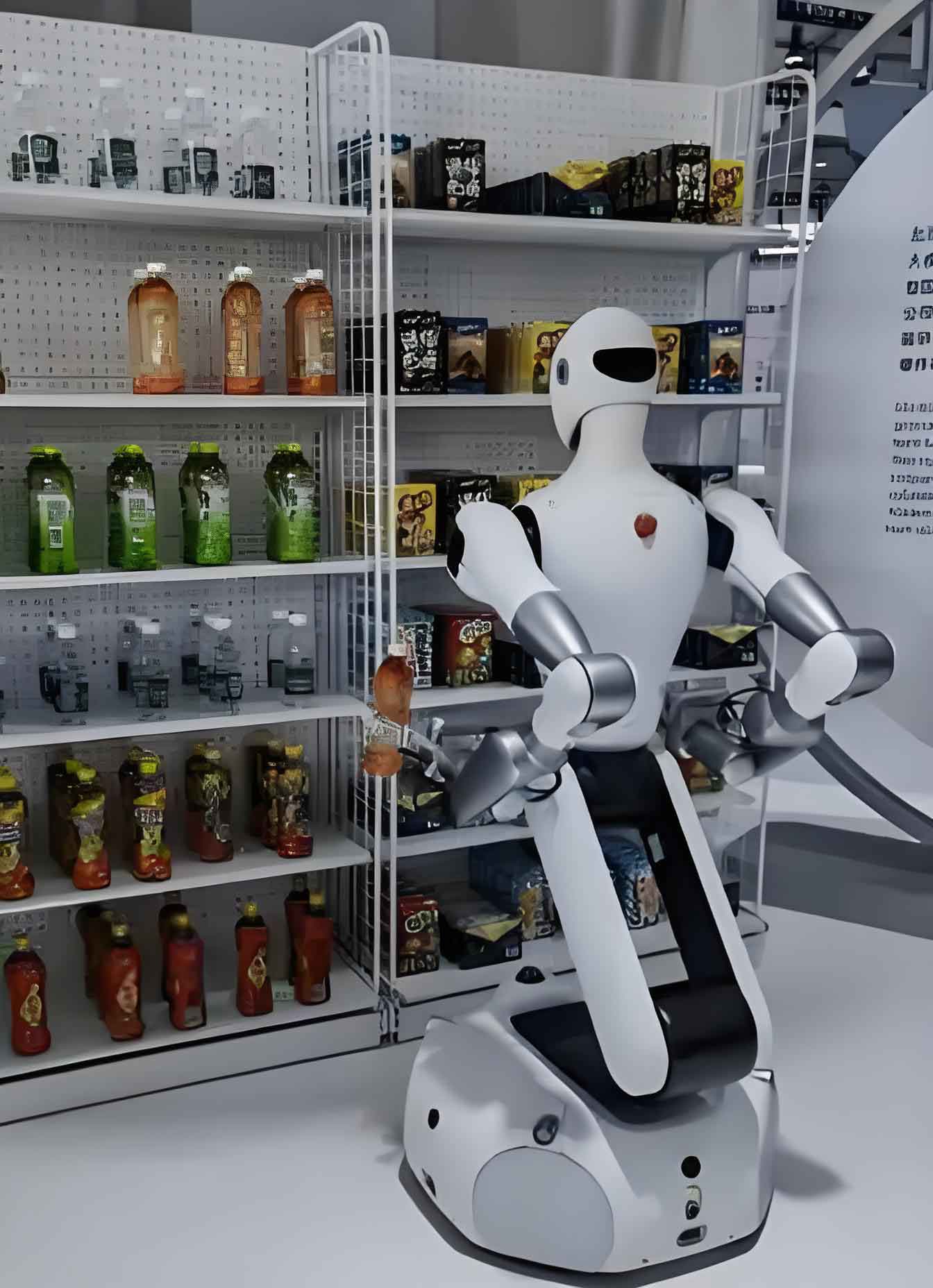CHANGSHA, CHINA—The arrival of China’s first Unitree G1 humanoid robot in a private household has sparked widespread fascination, showcasing the rapid evolution of domestic robotics technology. Dubbed “Thor” by its owner, this cutting-edge China robot represents a significant milestone in personal robotics accessibility.

- Physical Attributes and Basic Functions
Standing at 1.3 meters tall and weighing 35 kilograms, Thor resembles a pre-teen child in stature. Its silver-white metallic exterior features a smooth yet slightly granular texture. The head unit, equipped with 3D LiDAR and depth-sensing cameras, creates an imposing presence reminiscent of sci-fi automatons despite lacking facial features. Upon activation via remote control, the China robot transitions from a seated position to full upright stance in under 10 seconds, demonstrating remarkable joint articulation.
Current capabilities include:
- Performing handshakes upon command
- Responding to greeting gestures
- Maintaining balance when pushed
- Navigating elevators and slopes
- Executing slow-paced walks with toddler-like stability
Operators can master basic controls within 30 minutes, making this China robot surprisingly accessible despite its technological sophistication.
- Developmental Stage and Future Potential
Owner Mr. Lei, who acquired the China robot for approximately 300,000 yuan ($42,000 USD) after a two-month pre-order period, describes Thor as being in its “infancy phase.” While current functionalities remain foundational, a major system upgrade scheduled within months promises transformative enhancements:
- Voice command recognition
- Advanced dance choreography programming
- High-mobility actions including kicks, jumps, and running
“The China robot currently delivers primarily emotional value rather than practical applications,” Lei noted. “But its flexibility and capabilities will soon approach infinite possibilities.” Future plans include integrating DeepSeek’s AI architecture to significantly expand Thor’s cognitive functions.
- Commercial Deployment and Market Response
Lei, who operates a vehicle rental business, has successfully commercialized this China robot through an unconventional leasing model. Priced at 8,000 yuan ($1,100 USD) per day, Thor’s rental schedule is fully booked throughout March 2025. This unexpected market demand highlights growing commercial interest in China robot technology beyond industrial applications. The model’s appeal appears to stem from its novelty as much as its functionality, positioning it as both technological showcase and entertainment asset.
- Broader Implications for China’s Robotics Industry
Thor represents Unitree Robotics’ expanding vision beyond quadruped robots like those featured during China’s Spring Festival Gala. As China robot manufacturers increasingly target consumer markets, such humanoid platforms demonstrate several key industry trends:
- Accelerated transition from industrial to personal robotics
- Modular upgradability extending product lifecycles
- Hybrid commercial/personal use case development
The successful deployment of this China robot in Changsha underscores regional technological adoption patterns. While coastal hubs like Shanghai and Shenzhen traditionally dominated robotics innovation, inland cities are now emerging as testing grounds for consumer-facing China robot applications.
- Comparative Technological Positioning
Unlike research-focused humanoid projects, Unitree’s G1 China robot prioritizes practical stability over experimental mobility. This approach mirrors China robot manufacturers’ growing emphasis on market-ready reliability rather than speculative capabilities. The deliberate “staged enhancement” strategy—releasing basic functions first with promised upgrades—reflects a consumer electronics business model adapted to advanced robotics.
- Public Reception and Cultural Impact
Since its unboxing on February 22, 2025, this China robot has generated substantial public curiosity. Online discussions frequently reference its resemblance to cinematic robots while debating practical applications. The naming choice “Thor” reflects cultural hybridization—combining Western mythological references with Chinese technological pride. Such anthropomorphization suggests social readiness to accept humanoid China robots as domestic companions rather than purely utilitarian tools.
As China robot technologies advance, ethical discussions regarding human-robot interaction are emerging within academic circles. Professor Elena Richards (robotics ethicist, Oxford University) observes: “The rapid normalization of humanoid China robots in private spaces warrants careful consideration of emotional dependency factors, especially when marketed as companions.”
- Technical Specifications and Performance Metrics
Though detailed specifications weren’t disclosed, observational analysis reveals:
- 20+ degrees of freedom enabling fluid motion
- Multi-sensor stabilization system maintaining balance on uneven surfaces
- Energy efficiency allowing 4+ hours continuous operation
- Water/dust resistance enabling indoor-outdoor transition
These characteristics position this China robot competitively against international counterparts while remaining distinctly affordable within the premium robotics segment.
- Future Trajectory and Industry Implications
The G1 China robot’s staged enhancement path suggests a fundamental industry shift: robotics manufacturers increasingly function as service providers rather than hardware vendors. Future revenue streams may include:
- Subscription-based capability unlocks
- Cloud-connected AI services
- Developer ecosystems for custom skills
As Lei prepares Thor for its AI integration, this China robot exemplifies how consumer-focused platforms could accelerate real-world machine learning through diverse environmental exposure—a significant advantage over lab-constrained development.
This China robot’s journey from crate to commercial asset in under a week demonstrates both technological readiness and market appetite. With its March rental schedule full and upgrade path established, Thor represents more than a novelty—it’s a functional prototype of China’s rapidly approaching robotics-enabled future.
